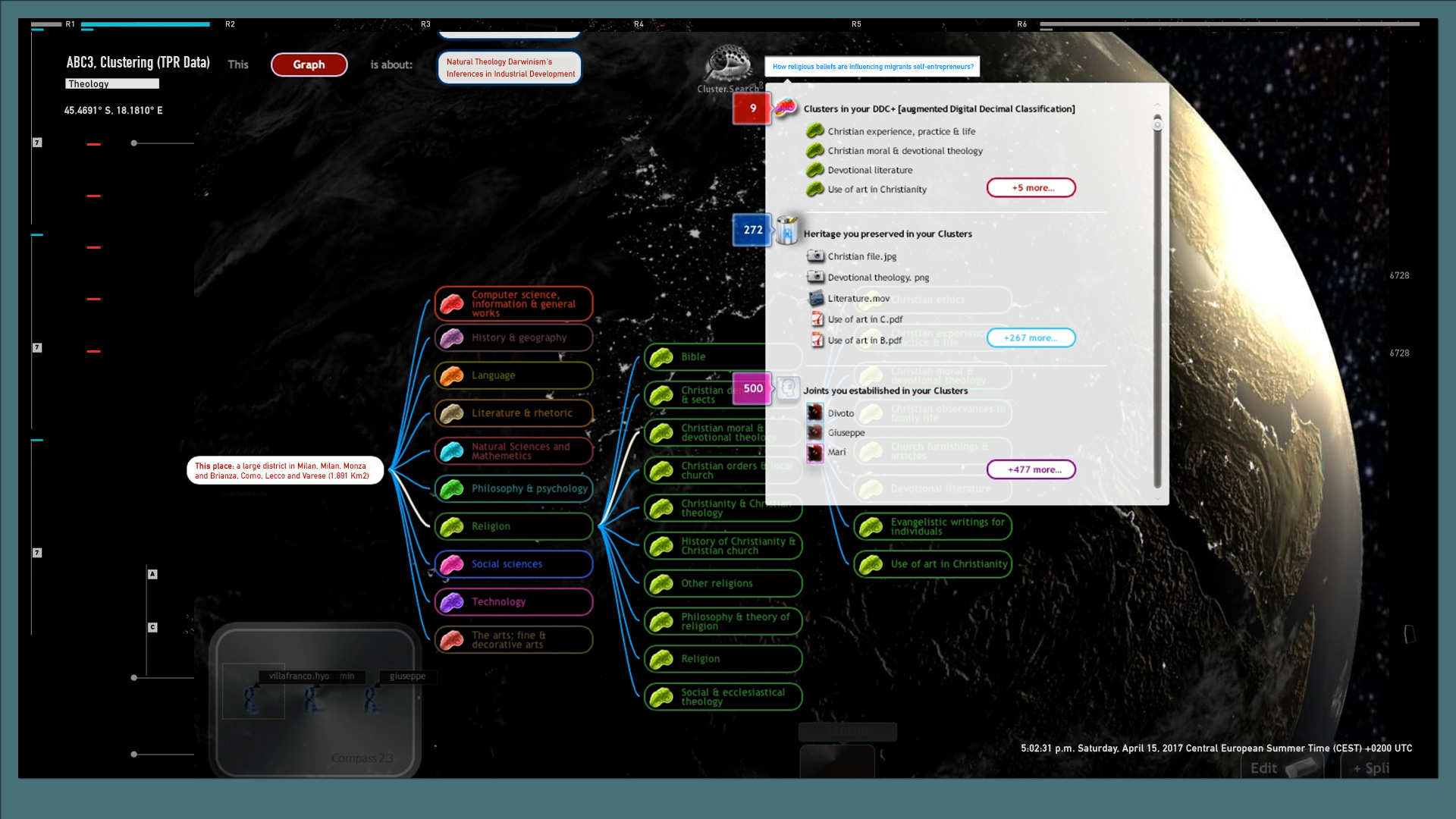.AbC3®

AbC3® (read: AbC-Cube) is an Artificial Bee Colony (ABC) algorithm based real-time processor of very large sets of dynamic data provided by sensors installed in a given geographic area and archived as a data-lake.
Weighted clusters of information will result differentiated by vertical peculiarities and prepared for a higher-level use, i.e. Census Data & Analysis.
Physical and non-physical, both structured and unstructured data, are captured by a network of sensitive detectors. In the first prototype (2012~14), ThePrimate® network of sensors, built and patented by X23, was set up and gathered information in a peta-byte order-of-magnitude.
At present time, structured datasets and subsets at zetta-byte order were assessed and standardised, then –at a further level– mixed with unstructured information and made ready to be processed by the metaheuristic model of GeneticDC®.
AbC3® was developed together with the University of Salerno. Its first application was intended to be applied in the field of "Green Industry” in the Southern Italy.
As a bid, it was proposed for the scientific evaluation of the National Research Council, and got the interest by Green Ventures – moreover, was co-funded by a public authority in Italy. Indeed, AbC3® received a very high score, resulting very highly ranked (5th over ~500 proposals). However, we did not utilise the public fund for the development.
.Case study #1
.AbC3® processing, clustering.
AbC3® is clustering a big amount of data gathered by ThePrimate® sensors network. The system is processing large amounts of data (Big Data), performing urgent computation and is accessible on AV/VR devices and smartphones’ suites of geo-referenced applications, connecting users to fluid geographic maps in real-time. Deep statistical information and weighted peculiarities are enclosed to AbC3 clusters, i.e. physical dimensions, behavioral conditions, widespread or precise phenomena in the area in a period of time. Calculation performed in AbC3® is defined “hybrid” since formal computation and anthropic informal estimates are combined.



















